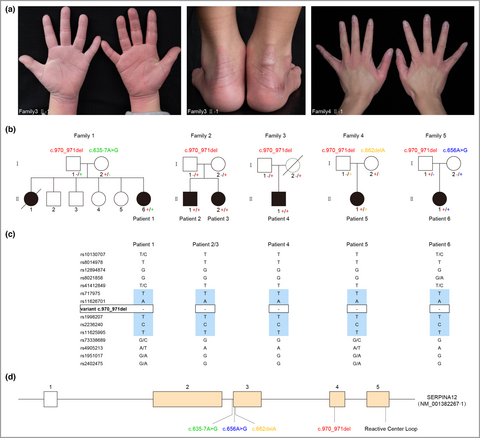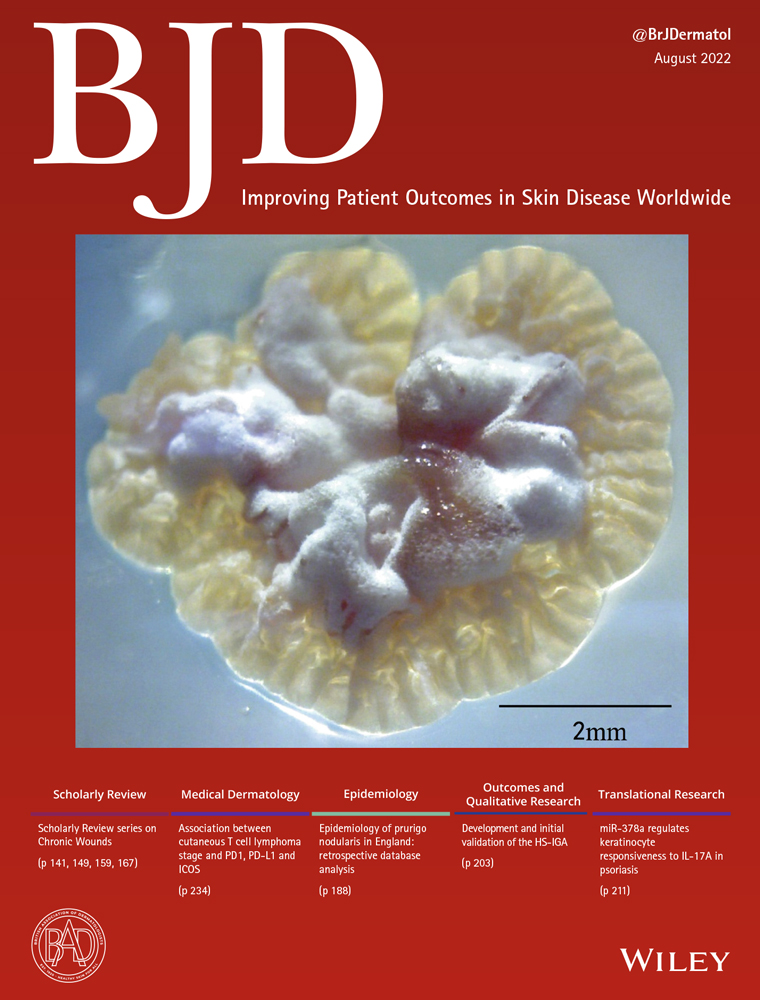Novel and founder variants of SERPINA12 in Chinese patients with autosomal recessive palmoplantar keratoderma
Y.L. and Y.T. share first authorship.
Funding sources: this work was supported by grants from the National Natural Science Foundation of China (grant no. 81903195 to Z.C., and grant no. 81730084 to Y.Y.) and from the CAMS Innovation Fund for Medical Sciences (CIFMS: 2021-1-I2M-018).
Conflicts of interest: the authors declare they have no conflicts of interest.
Data availability statement: the data that support the findings of this study are available from the corresponding author upon reasonable request.
Graphical Abstract
1. We extend the spectrum of SERPINA12 variants in palmoplantar keratodermas. 2. The recurrent variant c.970_971del, mainly prevalent in the East Asia population, was proved to be a founder variant. 3. Considerable SERPINA12-related palmoplantar keratoderma patients could be identified from autosomal recessive, non-mutilating, diffused palmoplantar keratoderma patients. 4. Other serpin family members or their co-effect may participate in the etiologies of underexplored hereditary palmoplantar keratodermas.





